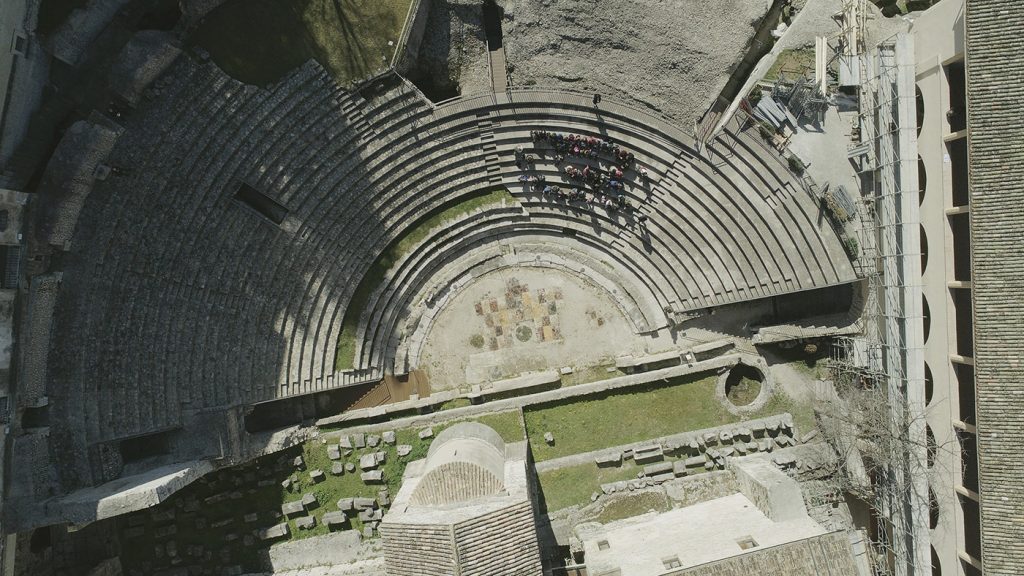Museo archeologico nazionale e Teatro romano di Spoleto
Spoleto
The museum

The
museum is located in the former monastery of Sant'Agata, in the
southern isolation of the historic center of Spoleto, consisting of the
encounter of today's streets Monterone and Sant'Agata, in an area
occupied in Roman times by the theater. It was once home to a monastery named after Sant'Agata, which was
built at the end of the 14th century on the ruins of the Roman theater
(1st century BC), whose scene was heavily altered by the construction of
the religious building.Opened in 1985, the museum is articulated on several levels adapting the exposure to the architecture of the historic building. An organic renovation project is under way, which has already completed (2008) a first section of this new exhibition path. Through
the findings of the most recent research, the first testimonies of the
presence of human presence in the fortress and the old town, dating back
to the Bronze Age and the development of the settlement in the Umbrian
period, are documented, witnessed above all by the rich VII- VI sec. B.C. Of the necropolis of Piazza d'Armi. On the second floor of the museum are exhibited exhibits from Valnerina, an area that was always in close contact with Spoleto. Particular
attention is given to the final bronze age cineraries from the
Monteleone necropolis of Spoleto, the finds from the shrines of
Montefranco, the funeral kits from the Hellenistic and Roman necropolis
of Norcia. Many of the finds from the Canzio Sapori collection, recently donated to the State, come from the same territory. Among them is a cinerary with a geometric decoration from Cerreto
Bridge and a remarkable portrait of late-republican men from Ferentillo.In
the section dedicated to the illustration of the Roman theater are
exposed the decorative sculptures found in the monument during the
excavations of the 1950s, including a statue of Aura (light breeding
personification), reworked as Venus; Recognized
by recent studies as an original Greek marble of the 5th century BC,
was reworked in Roman times to adapt it to the features of the goddess
goddess of the giulio-claudia dynasty. The interest of this discovery is compounded by the rarity of the
original Greek statues, which are mostly known through the many copies
made by the Romans.The theater, which is an integral part of the museum's visit, dates back to the 1st century BC. B.C. And partly was incorporated into the rear buildings, undergoing a partial dismantling in medieval times. Systematic restoration work, begun in the 1950s, allowed the entire complex to be recovered by restoring the steps. However, the lower floor is well preserved, with the ambulatory still viable.During the events associated with the Festival of Two Worlds, the theater is used for shows.
Address
via Sant'Agata, 18/a
06049 Spoleto
Timetables
Monday-Sunday 8.30-19.30
Situazione Emergenziale Aperture :
Aperture Attive
Information
polomusealeumbria.beniculturali.it/?page_id=151
pm-umb.muspoleto@beniculturali.it
Ph: +39 0743 223277
Closure: Lunedì
Full: 4,00 €
Reduced: 2,00 €